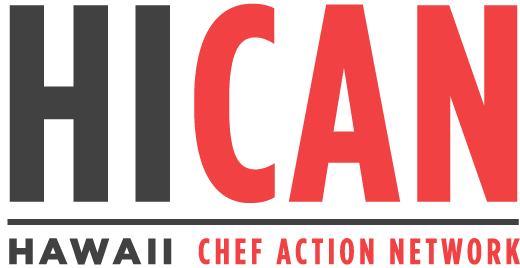The Problem
The decimation of ocean fisheries through decades of over-fishing and the desire to sell more seafood cheaply, has led to the rapid privatization of ocean waters on an industrial scale. This rapid increase in demand for fish and fish products has outpaced our regulatory agencies’ ability to manage emerging environmental and human health threats from the aquaculture industry. Though presented by the industry as a “solution” to over-fishing, the overwhelming evidence is that aquaculture is not relieving any pressures on wild fisheries.
The Solution
1. Buy from Community Supported Fishery (CSF) Businesses
Local I‘a is a community supported fishery that takes a quadruple-bottom line approach, seeking to create positive environmental, social, economic, and cultural changes in our island community. The overarching goal is to support sustainable fishing livelihoods by increasing the value of local fisheries, improve consumer access to fresh, local, responsibly caught seafood and preferentially source from sustainable fisheries that are well-managed and can provide seafood for future generations.
2. Support Sustainable Seafood
As a consumer, it’s often difficult to know where seafood comes from when you’re faced with all the options at your supermarket or restaurant. The Monterey Bay Aquarium's Seafood Watch program helps consumers and businesses make choices for healthy oceans. Seafood Watch recommendations show you which seafood items are "Best Choices" or "Good Alternatives," and which ones you should "Avoid". They have a wide variety of consumer guides available (national guides, state guides, and sushi guides) for free download and print. Their recommendations help you choose seafood that’s fished or farmed in ways that have less impact on the environment.
3. Ask Questions About Seafood
The easiest and most important thing you can do is ask the question: "Do you serve sustainable seafood?" Let your favorite businesses know that sustainable seafood is a priority for you. These companies in your community play a crucial role in the conservation of ocean resources and they listen to their customers. Ask them to support sustainable seafood and start making a difference. If information is not available in a store or on a restaurant menu, ask the following questions:
- Do you know where this seafood comes from?
- Do you know if it’s farmed or wild-caught?
- If it's wild, how was it caught?
4. Volunteer
- Paepae o He‘eia Fishpond
Paepae o He‘eia is a private non-profit organization dedicated to caring for He‘eia Fishpond – an ancient Hawaiian fishpond located in He‘eia Uli, Ko‘olaupoko, O‘ahu. Established in 2001 by a group of young Hawaiians, Paepae o He‘eia works in partnership with landowner, Kamehameha Schools, to manage and maintain He‘eia Fishpond for the community. The vision is to perpetuate a foundation of cultural sustainability for communities (‘ohana) of Hawai‘i through education. To reach their vision, they utilize the strengths of the fishpond as a place of learning to weave ancestral knowledge together with western ways of knowing to achieve our goals.
- Loko Ea
- The loko iʻa fishpond in Haleiwa, traditionally named Loko Ea is a significant cultural site nestled on Oʻahu’s North Shore. The area is traditionally known for its profusion of fresh water springs and flowing streams. Famous was the moku of Waialua for its abundance and fertility, where mahiʻai farmers and kanaka lawaiʻa fishermen could sustain their families with bountiful harvests. Community members of all ages are invited to our monthly (the 3rd Saturday of each month) lā hana to help with age appropriate restoration activities at Loko Ea.
- Waikalua Loko I‘a Fishpond
- Restoration and preservation of the Waikalua Loko I‘a are part of ongoing efforts by students, community groups and many individuals during school visits and community work days. Public and private partners are taking responsibility as stewards to breathe new life back into the 400 year old fishpond. As each stone is put back on the wall and each native plant takes root, they build the foundation for a healthier and sustainable future that honors the rich cultural and natural heritage of the Kāne‘ohe ahupua‘a.
- ‘Ao‘ao O Na Loko I‘a O Maui
- ‘Ao‘ao O Na Loko I‘a O Maui is a non-profit organization that is dedicated to the revitalizing Ko‘ie‘ie Fishpond for educational, archaeological, cultural and recreational purposes. This fishpond is a symbol of the Hawaiian culture and history and must be preserved as a testament to Hawai‘i’s past and an icon for the future. It is a cultural landmark tucked away in the growing community of Kihei in South Maui. ‘Ao‘ao O Na Loko I‘a O Maui are working with the community to bring the historical and cultural life back to a land-mark which has been living quietly for too long.
Resources
For more information, check out these resources:
The Sustainable Fisheries Partnership (SFP) has been building a global fisheries online database – FishSource provides major seafood buyers with up-to-date, impartial, actionable information on the status of fisheries and improvements needed to become sustainable. By assembling the essential data and making it freely available, companies can save time and resources by accessing FishSource for sustainability information and fisheries status.
The Safina Center’s Sustainable Seafood Program helps consumers, chefs, retailers and medical communities discover the connection between human health, a healthy ocean, fishing and seafood.
To ensure that the ocean will feed Hawaiʻi’s people for generations to come, Conservation International Hawai'i merges traditional knowledge with Western science, conservation tools and strategies for changing how people and business value local, sustainable seafood.
The Hawai‘i Seafood Council non-profit organization that supports responsible fisheries and sustainable seafood in Hawai‘i for future generations through consumer education, outreach, and research. Sustainable fisheries are those that operate under a science-based adaptive management approach, with sustainable fish population, harvest targets and controls ecosystem impacts. Their website has a ton of information about various fish found in Hawai‘i, Hawaiʻi’s fishing industry, the fish market, sustainability, health and fishery improvement process.

